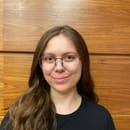The Her Campus National Editors write about products we love and think you’ll love too. Her Campus has affiliate partnerships, so we get a share of the revenue from your purchase. All products are in stock and all prices are accurate as of publication.
Do you remember the first book you have ever read? Even if you don’t, there’s one thing you can be sure of: you were a kid. Whether you learned it just by pure obligation or curiosity, reading is one of the first marks of independence you achieve as an infant, intellectually speaking. Actually, learning how to read and write is a right guaranteed for every kid by ECA (Estatuto da Criança e do Adolescente).
In Brazil, the National Children’s Book Day started being a thing in 2002, and it is celebrated on April 18th. The date was chosen to make an homage to Monteiro Lobato, born on the same day in 1882. Although we may find his work controversial nowadays, it is undeniable how remarkable he is in the field, and even is considered a pioneer in Brazilian Children’s Book.
With this beautiful story in mind, continue reading to learn how children’s books are made!
How is a children’s book made?
It may not be a surprise, but writing books for kids is way different than writing for adults. According to Celso Sisto, writer of the book Africanear!, many aspects define whether the title is destined to children or not: “Each public requires a specific kind of writing, especially when it comes to kids. Children’s books cover a period of time so big and transformations that happen so fast! In my opinion, someone who writes with this young public in mind needs to focus on the language. It is the writer’s primary material and the factor that is going to determine who is the target audience! However, surely, aspects like the text flow, quantity, the narrative’s structure, how you tell that story, the way the main subject of the book is addressed, and many more!”.
Language is not the only thing taken into account. Are the kids reading by themselves? Or do they need someone to read for them? Celso explains: “There are books that require someone to intermediate the reading, and there are others in which the target audience already feels more comfortable in reading by themselves. Books destined for children who are alphabetized have a different language and other challenges, such as more text, harder subjects, more elaborate themes… However, every book of this kind prioritizes imagination and ludic narrative, since it is a necessity. It is not whether the kids are alphabetized or not how the complexion of the book is determined, but the reader’s maturity, its baggage, its cultural level, the social and family context it lives in…”.
Besides the structure, something any book must have is a theme! Celso affirms that contrary to what most readers think, the theme is not the first thing to be planned when writing a book: “The beginning of a new story is, usually, by the plot of something I want to tell. Focusing on the theme is the next step after thinking about the synopsis (which spins in my head before getting inked on paper). I can also start the story with an interesting character or situation, but hardly by the theme”.
When imagination meets paper
There is no such thing as a children’s book illustration! Drawings, colors, it all helps kids visualize the story being told. The illustrator Helena de Cortez, also the writer of Coração Nunca se Esquece, explains how the illustration combines with the writing: “When it comes to cases where the same person is both the author and illustrator, this process can differ. In cases where they are different people, most times the illustrator receives the text and then creates something based on that. There are also cases when both processes are completed at once”.
According to her, not all authors give some hints of what they expect in the book, but always respect her ideas and understand how important the illustrations are. Celso agrees with her:
Both texts, visual and written, have to establish a dialogue between them. Illustration is not some kind decoration; it is supposed to be rich and significant, it has to go beyond words and enlarge what is being said, not only reproduce it.
When it comes to the title’s identity, Helena explains that many factors need to be taken in consideration to create the main plot of the illustration: “It is necessary to consider who is going to read that, what it is its message, visual impact on the shelves when people are buying the book and so many more!”. Colors are a huge component of that, and choosing the right ones is the key to help convey the book’s theme and emotions, according to the illustrator.
Lifelong learnings
Every year, teachers spend some time searching and selecting books for their students to read. Whether it is to read at home and prepare for some activity later, or to read during the classes, it is not a simple process. Tânia Elisa Serra has been a Portuguese teacher for 38 years, and always elaborates different activities for the books she recommends in school: “I usually create some projects that also include other subjects, such as History, Geography, and Arts. Every time it is possible, I ask them to correlate the story they read with their reality”. She explains that, although publishers offer a list of what books are fit for certain ages, it is crucial that the teachers read it first before recommending them.
All of that work is not only to fulfill the curriculum but to awaken the pleasure of reading since the students learn how to do so. Tânia has a whole method to select the right books that can be actually fun for her students:
“Surely, books read in school have a huge impact in creating the habit to read, since it is at this age that they start enjoying it. With that in mind, it is so necessary to work with titles chosen with creativity, in order for them to feel enchanted for the act of reading”.
It is never too late!
Celso and Helena have one thing in common: working with children’s books was not plan A. The author wanted to be an actor and publish poetry: “Children’s literature appeared in my life as a result of my job as a literature teacher and as a consequence of my work as a storyteller. After so much time working directly with kids, there was a time I started inventing stories of my own to tell them. Their receptivity made me continue it!”.
The illustrator’s trajectory was a bit more complicated. At first, she graduated in Publicity and Advertising and also in Visual Arts: “For a long time I didn’t know I could actually be a professional illustrator”, explains Helena, “During the 10 years I worked in the editorial area as a designer and art editor, I requested illustrations for professional illustrators, and sometimes did my own in some magazines […] I did a one month illustration course – in watercolor – at UFMG’s Winter Festival. We illustrated Minha Vida de Menina, by Helena Morley, which is set at Diamantina, where the festival took place”. She also identifies with children’s books: “What I value the most in this type of books is their playfulness. They address super important themes that stick with us until we’re old, just by their essence. We all have eternal kids internally”.
If you’ve come this far and is curious about children’s books, Her Campus Cásper Líbero prepared a selection of 5 books for you. Take a look!
5 Children’s Books to read (even if you’re an adult)
- Africanear!, by Celso Sisto and illustrated by Maurício Negro
-
The title presents retellings of five different regions of the continent. Their purpose? Make it clear that Africa is not a country, but a continent, with vast and diverse narratives, beauty and imagination.
Each one of the tales show an interaction between the human universe and nature, explaining the origin of each of their customs and traditions, as well as their flora and fauna.
You can buy it HERE!
- Coração nunca se esquece, written and illustrated by Helena de Cortez
-
No one is ready to deal with loss. Teresa and her dog Lalá were inseparable, until the pet’s death. The book addresses how, sometimes, the loss of a pet is the kid’s first contact with grief and how finite life is.
It also explains, in a ludic way how, even though someone we love is not physically with us, they live in our hearts forever and we keep their legacies alive by the shared memories. How touching, right?
You can buy it HERE!
- Amanhã, written and illustrated by Lúcia Hiratsuka
-
Three generations ask the same question: “Am I going to school tomorrow?”. The first one is a portrait of the writer, granddaughter of a Japanese immigrant who loves going to school.
The second one is Sayuri, the protagonist’s mother, who lived in Brazil during World War II and had to study in a hidden school, since any manifestation of Japanese culture was banned at the time. The third one is Orie, the grandmother, who attended school in Japan and had a whole different experience than the Sayuri and her granddaughter.
You can buy it HERE!
- A melhor mãe do mundo, by Nina Rizzi and illustrated by Veridiana Scarpelli
-
If there is one thing the main character knows is that his mom is the best in the whole world! She cooks for everyone, she helps those who need it and the days he visits her are awesome.
The book portrays a motherhood face we rarely see: the incarcerated one. It breaks stereotypes and addresses prejudice with the innocent look of a child, and surely will touch your heart.
You can buy it HERE!
- A fada que tinha ideias, by Fernanda Lopes de Almeida and illustrated by Edu
-
Nothing more “parently” than worrying about your own child. Clara Luz is a young fairy who loves inventing new spells, although it is forbidden by law!
Tradition says that every fairy must go through the spell’s lesson, but Clara didn’t pass the first one. Along her discovery journey, we get to accompany her worried mother and learn that it is okay to be different!
You can buy it HERE!
————————
The article above was edited by Júlia Pupo Mucha Fagá.
Liked this type of content? Check out Her Campus Casper Libero for more!


